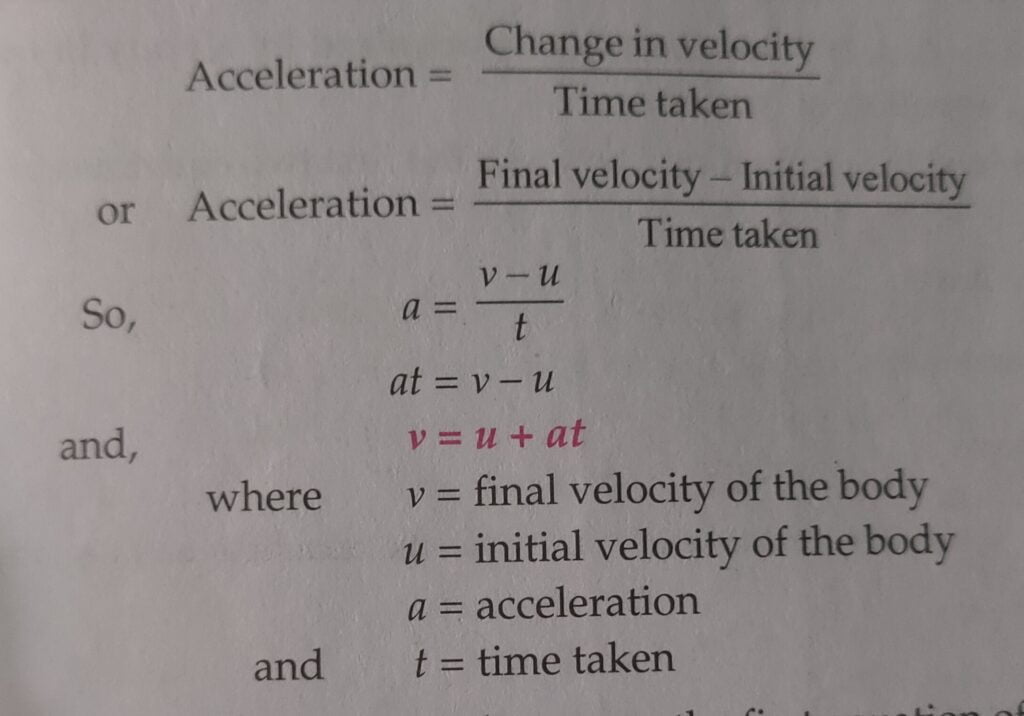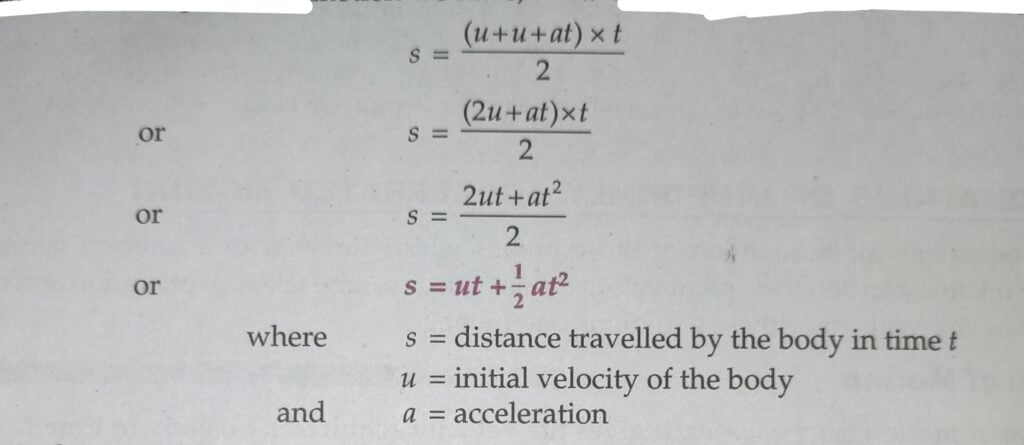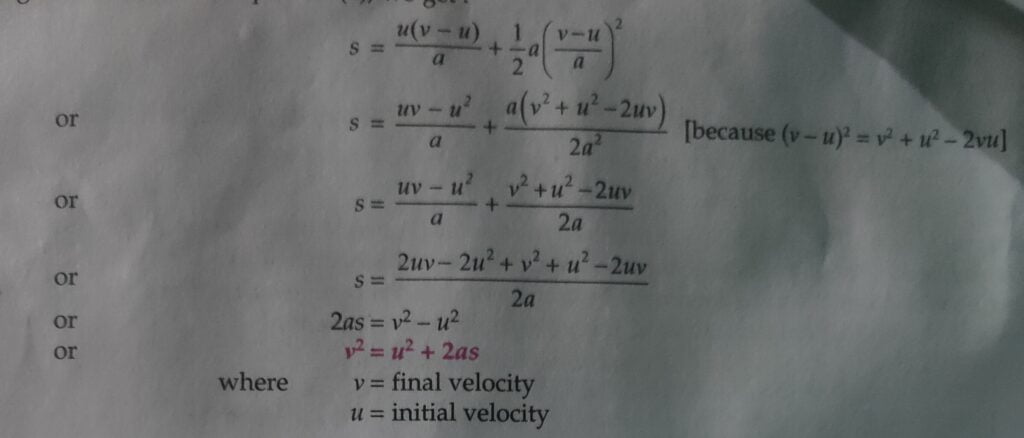There are three equations for the motion of those bodies which travel with a uniform acceleration . These equations give relationship between initial velocity , final velocity , time taken , acceleration and distance travelled by the bodies . We will study these equations one by one .
1. First Equation of Motion
The first equation of motion is : v = u + at . It gives the velocity acquired by a body in time t . We will now derive this first equation of motion . Consider a body having initial velocity ‘ u ‘ . Suppose it is subjected to a uniform acceleration ‘ a ‘ so that after time ‘ t ‘ its final velocity becomes ‘ v ‘ . Now , from the definition of acceleration we know that :

The equation v = u + at is known as the first equation of motion and it is used to find out the velocity ‘ v ‘ acquired by a body in time ‘ t ‘ , the body having an initial velocity ‘ u ‘ and a uniform acceleration ‘ a ‘ . In fact , this equation has four values in it , if any three values are known , the fourth value can be calculated . By paying due attention to the sign of acceleration , this equation can also be applied to the problems of retardation.
2 second equation of motion
The second equation of motion is : s = ut + at² . It gives the distance travelled by a body in time t . Let us derive this second equation of motion . Suppose a body has an initial velocity ‘ u ‘ and a uniform acceleration ‘ a ‘ for time ‘ t ‘ so that its final velocity becomes ‘ v ‘ . Let the distance travelled by the body in this time be ‘ s ‘ . The distance travelled by a moving body in time ‘ t ‘ can be found out by considering its average velocity . Since the initial velocity of the body is ‘ u ‘ and its final velocity is ‘ v ‘ , the average velocity is given by :


From the first equation of motion we have , v = u + at . Putting this value of v in equation ( 1 ) , we get

This is the second equation of motion and it is used to calculate the distance travelled by a body in time t . This equation should also be memorized because it will be used to solve numerical problems .
3 Third Equation of motion
The third equation of motion is : v² = u² + 2as . It gives the velocity acquired by a body in travelling a distance s . We will now derive this third equation of motion .
The third equation of motion can be obtained by eliminating t between the first two equations of motion . This is done as follows .
From the second equation of motion we have :

And from the first equation of motion we have :

This can be rearranged and written as :

Putting this value of t in equation ( 1 ) , we get :


This equation gives us the velocity acquired by a body in travelling a distance s .EditWhat is the equation of uniformly accelerated motion? class 9SearchSearch

